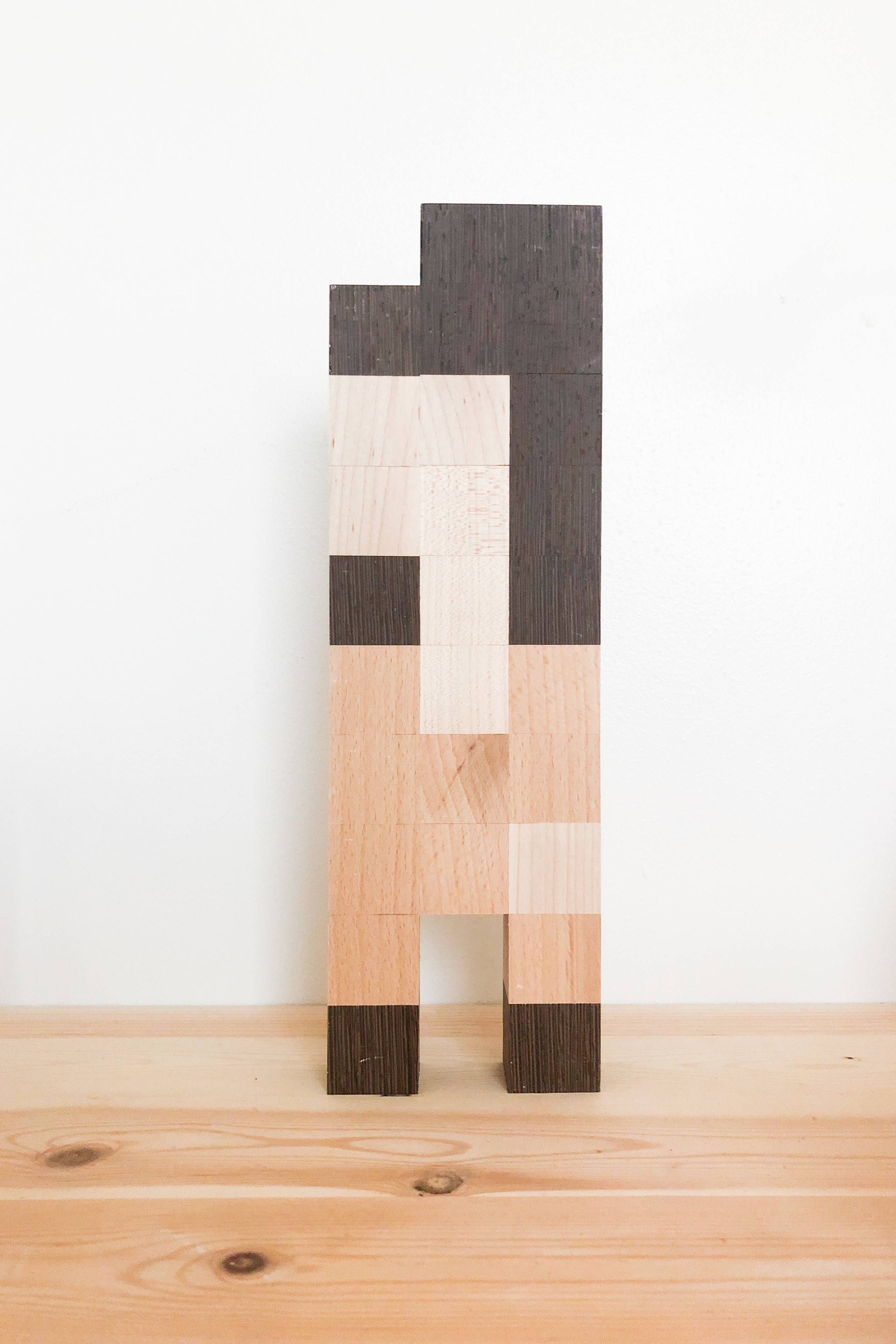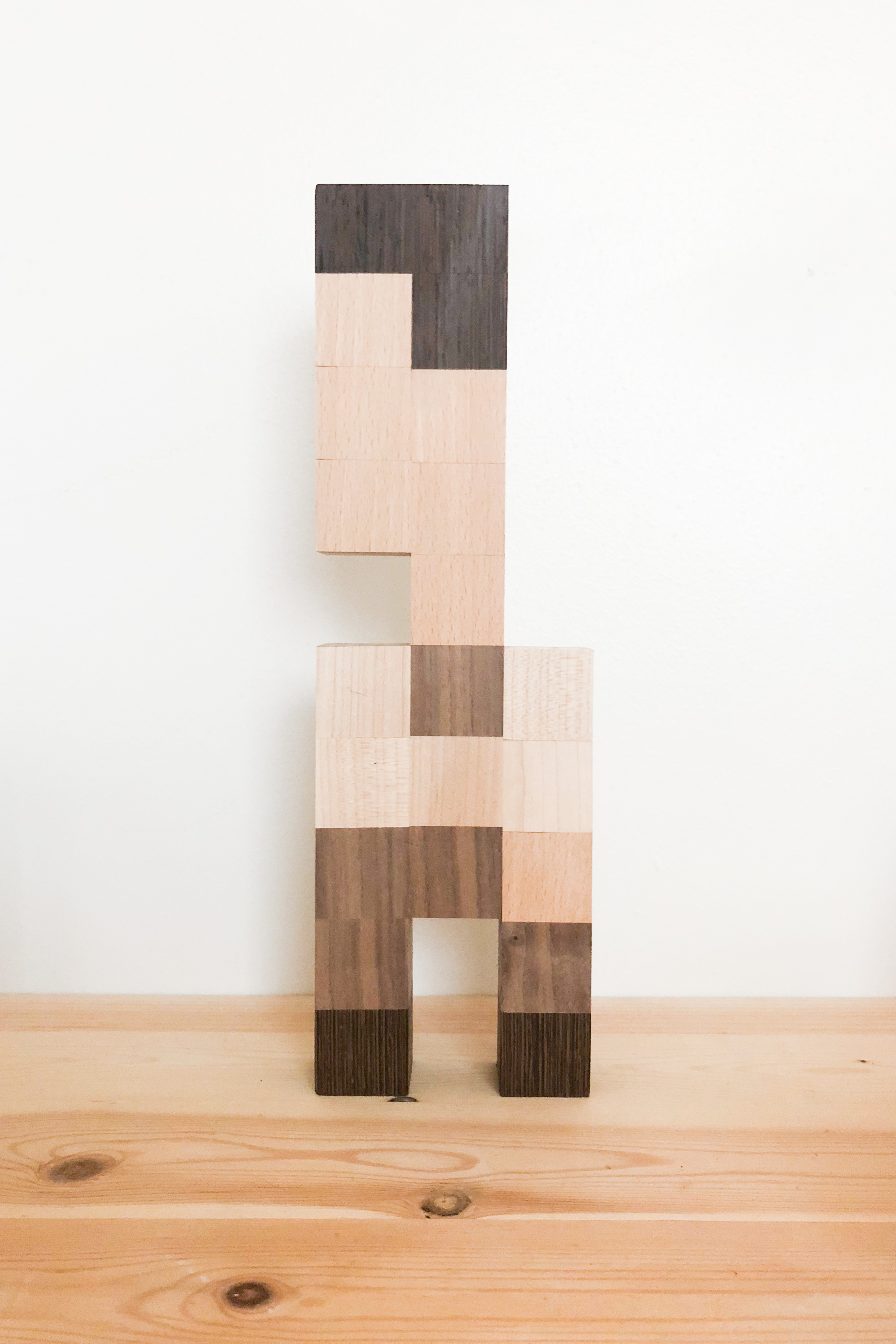The People’s
Mashrabiya





The People’s Mashrabiya is a hand-made wood screen constructed of over 1300 individual wood blocks. Each block uses one of four types of hardwood (maple, beech, walnut, and wenge) to provide simple pixelated graphics using four shades of color. The blocks compose a motif of abstracted human figures representing the different cultures and socio-economic groups living in Doha.
Architecturally, Mashrabiya are perforated wood screens composed of intricate geometric patterns used as both interior and exterior architectural elements. The Mashrabiya is a significant component in traditional Islamic architecture functioning as a semipermeable screen between the public spaces of the city and the private interiors of the family.1
Below is an example of an Islamic style Mashrabiya in Cairo from the late 19th century.fig. 1
![]()
Architecturally, Mashrabiya are perforated wood screens composed of intricate geometric patterns used as both interior and exterior architectural elements. The Mashrabiya is a significant component in traditional Islamic architecture functioning as a semipermeable screen between the public spaces of the city and the private interiors of the family.1
Below is an example of an Islamic style Mashrabiya in Cairo from the late 19th century.fig. 1

This project engages with these concepts of public and private space within the context of contemporary Arabian-Gulf cities whose population has swelled exponentially since the turn of the millennium. This growth is primarily due to a rapid influx of both skilled and unskilled migrant workers who travel to the region to provide labor across a range of sectors including education, finance, construction, and other service industries. The resulting diversity of population along with other forces of globalization have dramatically changed the social landscape of these cities. Against this context, the project explores the historical and religious foundations of privacy as they collide with the complex and changing realities of public space and the rapidly growing diversity in the region.
The People’s Mashrabiya is a collaboration between Levi Hammett & Maryam Al Homaid based on research conducted by Levi Hammett & Pornprapha Phatanateacha. This project was supported by the VCUarts Qatar/Qatar Foundation Faculty Research Grant program.
The People’s Mashrabiya is a collaboration between Levi Hammett & Maryam Al Homaid based on research conducted by Levi Hammett & Pornprapha Phatanateacha. This project was supported by the VCUarts Qatar/Qatar Foundation Faculty Research Grant program.
Hammett, Levi., Maryam Al Homaid, Pornprapha Phatanateacha. The People’s Mashrabiya. Hand-made wood screen, maple, beech, walnut, wenge. 78cm x 210cm x 3cm. 2018.
Exhibitions & Publications:
What If, Curated by Muna Al Bader, ART 29 Gallery W Hotel & Qatar/USA year of Culture. Doha, Qatar. (Invited, Group Exhibition, International). 30 January 2021.
[Re]Action, Gallery 18, Katara Cultural Village, Doha, Qatar. (Juried, Group Exhibition, National). 28 November - 31 December 2018.
Bangkok Design Week 2018, Thailand Creative Design Center, Bangkok, Thailand. (Juried, Group Exhibition, International). 26 January - 5 February, 2018.
Exhibitions & Publications:
What If, Curated by Muna Al Bader, ART 29 Gallery W Hotel & Qatar/USA year of Culture. Doha, Qatar. (Invited, Group Exhibition, International). 30 January 2021.
[Re]Action, Gallery 18, Katara Cultural Village, Doha, Qatar. (Juried, Group Exhibition, National). 28 November - 31 December 2018.
Bangkok Design Week 2018, Thailand Creative Design Center, Bangkok, Thailand. (Juried, Group Exhibition, International). 26 January - 5 February, 2018.
1. Ashour, Ayman Fathy. “Islamic Architectural Heritage: Mashrabiya”. WIT Transactions on The Built Environment, Vol. 177 (2018) 245-253. ISSN 1743-3509
Fig.1. G. Lekegian and Company. No. 74, “Rue Bab el Vazir”. Fine Arts Museums of San Francisco. 2001.161.27
Fig.1. G. Lekegian and Company. No. 74, “Rue Bab el Vazir”. Fine Arts Museums of San Francisco. 2001.161.27